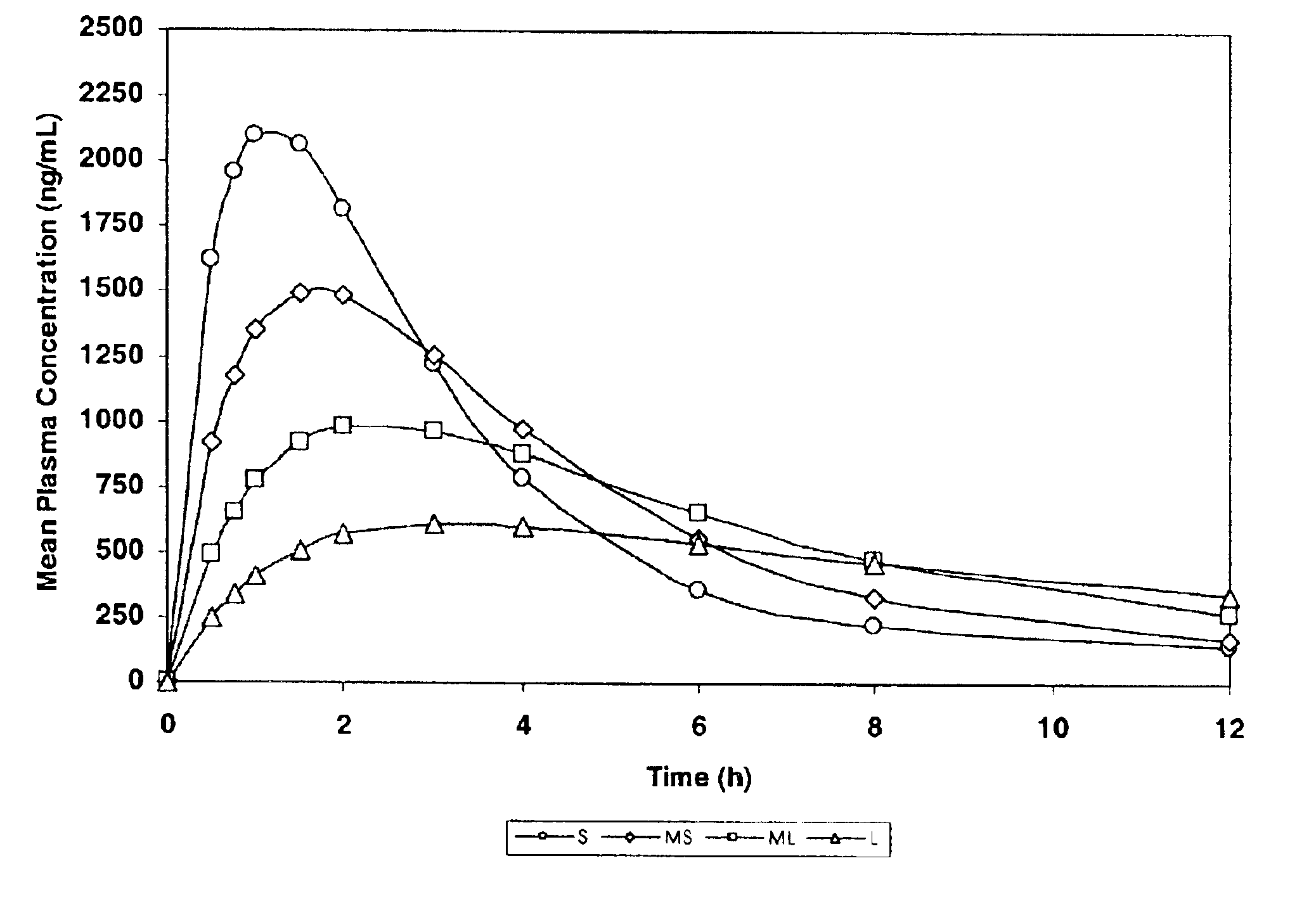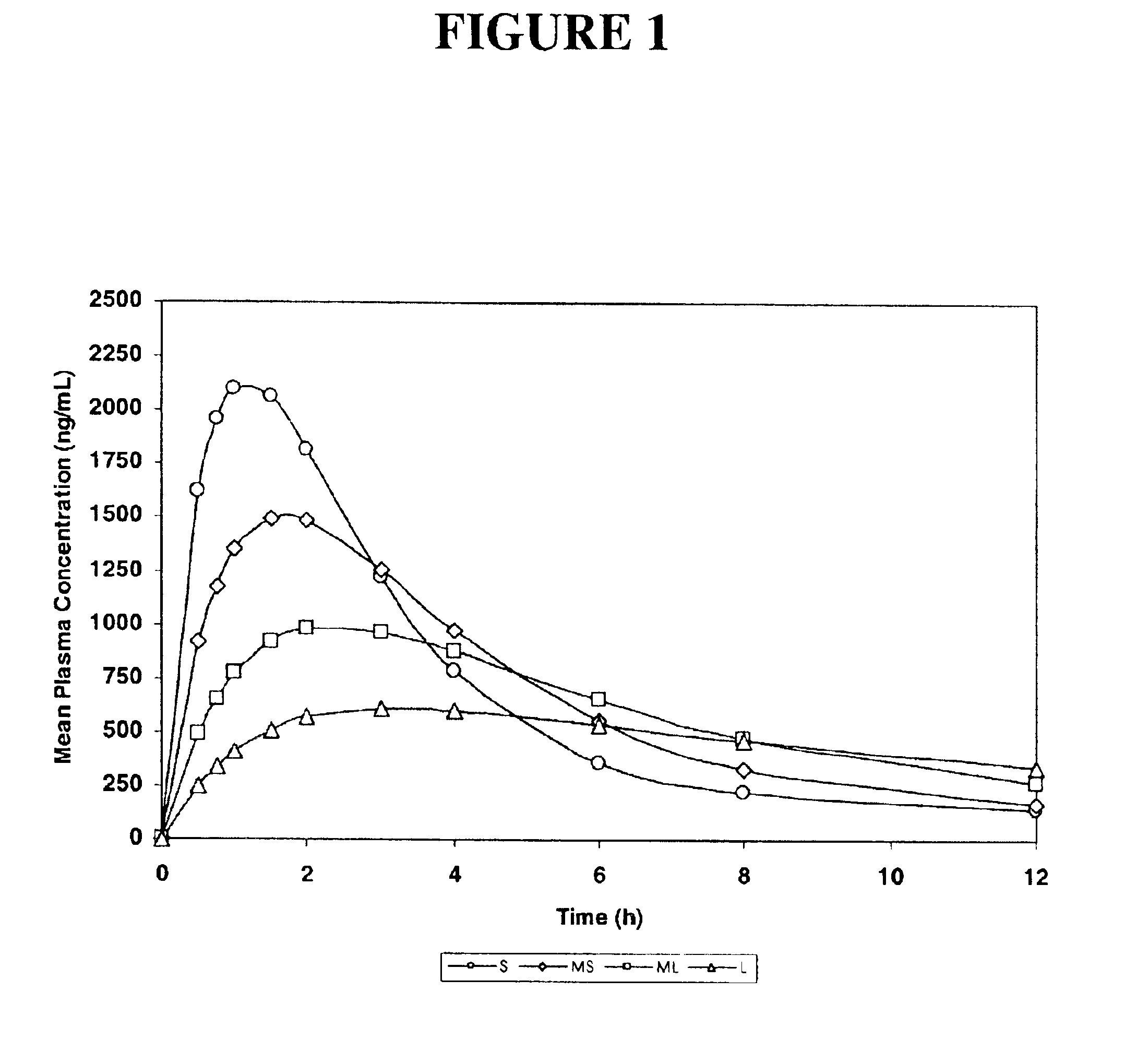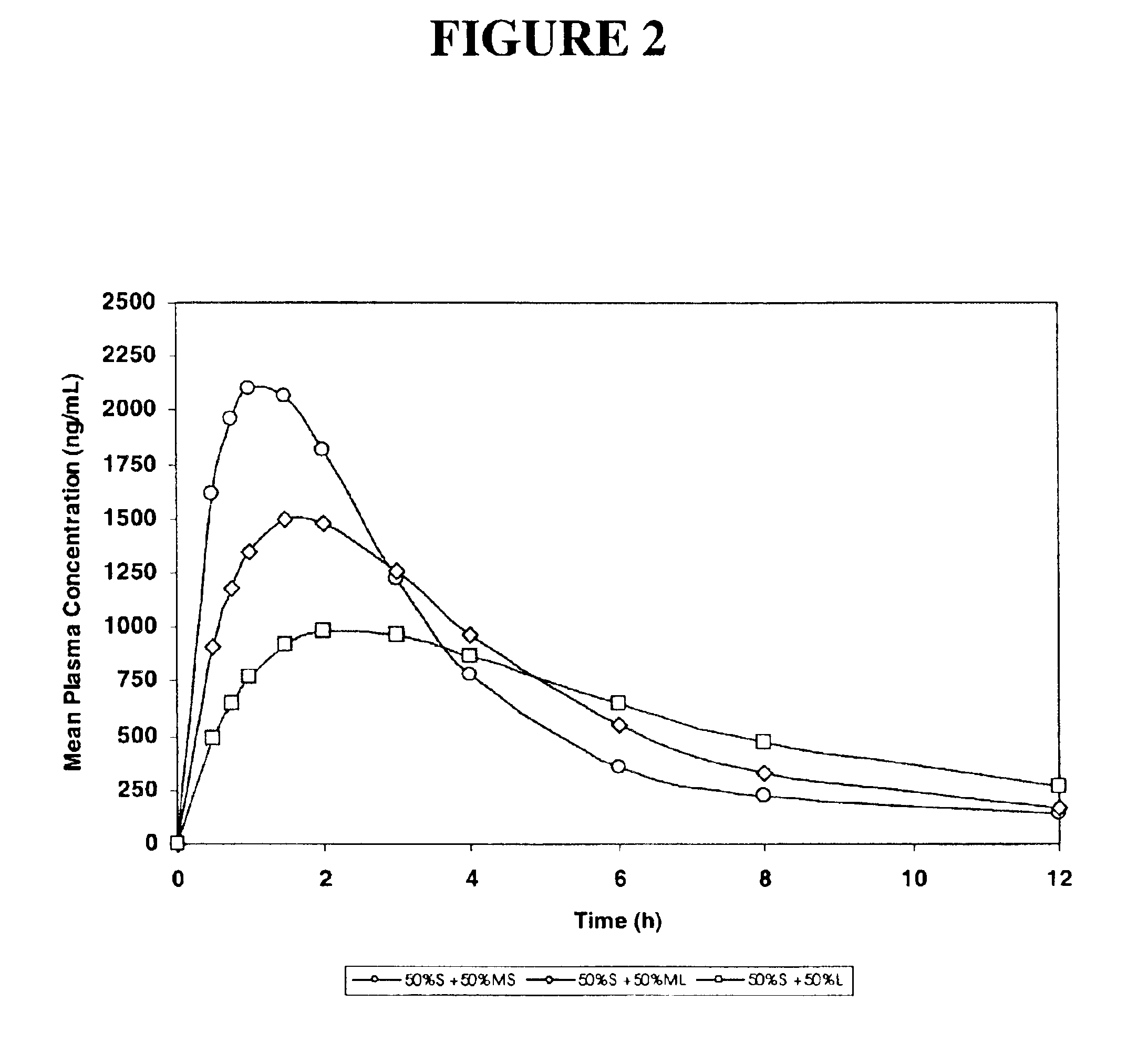Compositions having a combination of immediate release and controlled release characteristics
- Summary
- Abstract
- Description
- Claims
- Application Information
AI Technical Summary
Benefits of technology
Problems solved by technology
Method used
Image
Examples
example 1
[0153]The purpose of this example was to simulate, using a mathematical model, pharmacokinetic profiles following single oral doses of a pharmaceutical formulation containing an active agent having a single defined particle size.
[0154]The software used for the simulation was MicroMath PKAnalyst for Windows, version 1.1, MicroMath, Inc. The following assumptions were made: the active agent conforms to a 2-compartment (central and peripheral compartments) pharmacokinetic model with 1st-order absorption and 1st-order elimination from the central compartment.[0155]D / V (dose / volume)=5000;[0156]Ka>1.000 h−1 (rate constant corresponding to the rate of dissolution);[0157]Ke=0.50 h−1 (elimination rate constant);[0158]K12=0.25 h−1 (constant representing the rate of diffusion from the central compartment to the peripheral compartment); and
[0159]K21=0.125 h−1 (constant representing the rate of diffusion from the peripheral compartment to the central compartment).
[0160]Four samples were designed...
example 2
[0169]The purpose of this example was to simulate, using a mathematical model, pharmacokinetic profiles following single oral doses of a pharmaceutical formulation containing mixtures of different sizes of particles.
[0170]The assumptions described in Example 1 are applicable to Example 2.
[0171]Simulated pharmacokinetic profiles following single oral doses of a pharmaceutical formulation containing 50:50 mixtures of small (S) particles plus medium-small (MS), medium-large (ML), or large (L) particles of an active pharmaceutical ingredient are shown in FIG. 2.
[0172]The results show, in particular, that the mixture of (S) small and (L) large particles exhibits a significantly greater maximum mean plasma concentration (almost 1000 mg / mL) as compared to the (L) large particles administered in Example 1, and the formulation also exhibits prolonged blood plasma levels, in contrast to the to the (S) small particles administered in Example 1.
example 3
[0173]The purpose of this example was to simulate, using a mathematical model, pharmacokinetic profiles following single oral doses of a pharmaceutical formulation containing mixtures of different sizes of particles.
[0174]The assumptions described in Example 1 are applicable to Example 3.
[0175]Simulated pharmacokinetic profiles following single oral doses of a pharmaceutical formulation containing 25:75 mixtures of small (S) plus medium-small (MS), medium-large (ML), or large (L) particles of an active pharmaceutical ingredient are shown in FIG. 3.
[0176]The results show, in particular, that the mixture of (S) small and (L) large particles exhibits a significantly greater maximum mean plasma concentration (almost 900 mg / mL) as compared to the (L) large particles administered in Example 1, and the formulation also exhibits prolonged blood plasma levels, in contrast to the to the (S) small particles administered in Example 1.
PUM
| Property | Measurement | Unit |
|---|---|---|
| Length | aaaaa | aaaaa |
| Length | aaaaa | aaaaa |
| Fraction | aaaaa | aaaaa |
Abstract
Description
Claims
Application Information
 Login to View More
Login to View More - R&D
- Intellectual Property
- Life Sciences
- Materials
- Tech Scout
- Unparalleled Data Quality
- Higher Quality Content
- 60% Fewer Hallucinations
Browse by: Latest US Patents, China's latest patents, Technical Efficacy Thesaurus, Application Domain, Technology Topic, Popular Technical Reports.
© 2025 PatSnap. All rights reserved.Legal|Privacy policy|Modern Slavery Act Transparency Statement|Sitemap|About US| Contact US: help@patsnap.com



